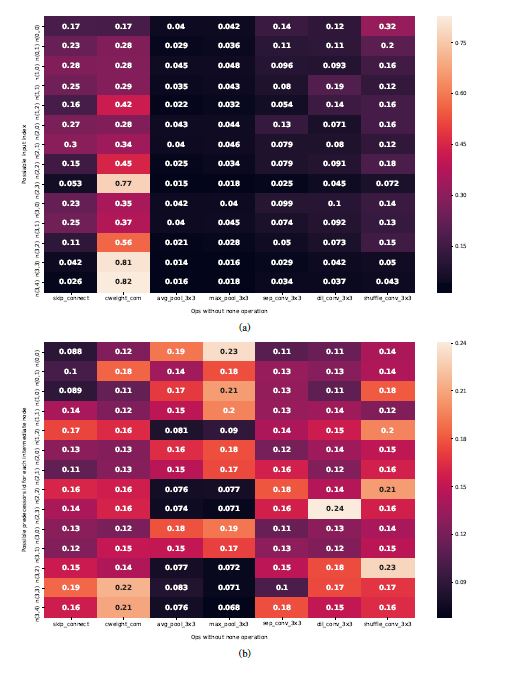Automatic Convolutional Neural Architecture Search for Image Classification under Different Scenes
Our work is based on DARTS
-
Ubuntu14.04/16.04 or Window10 (Win7 may also support.)
-
Python >= 3.6
-
torch >= 0.4.1
-
torchvision == 0.2.1
-
seaborn (optional)
-
pygraphviz (optional)
NOTE: pytorch 0.4.x also work ok, but will meet ConnectionResetError When use the second approximation.
Todo:
- Merge into the CNASV prototype
- Replace the backbone network by automatically search outer network
- Give up the cell-based architecture for designing more flexible search space
- Merge this work to CNASV ( Search-Train Prototype for Computer Vision CNASV)
pip3 install requirements.txtNotice
if you use win10, and want to show the cell architecture with graph, you need install the pygraphviz and add
$workdir$\\3rd_tools\\graphviz-2.38\\bininto environment path. Here$workdir$is the custom work directory. such asE:\\workspace\\cnas
How to search:
python train_search.py --num-meta-node 4 --cutout --data '../data/cifar10'How to evaluate the CNN architecture we searched
- run on multi gpus (gpu1, gpu2)
CUDA_VISIBLE_DEVICES=1,2 train_cnn.py --cutout --multi-gpus- run on single gpus we will find a max free memory gpus and run on it.
python train_cnn.py --cutout --multi-gpusConfigure details
Notice: num-meta-node, use-sparse and train-portion invalid in evaluate stage and multi-gpus, auxiliary and auxuliary-weight invalid in search stage
- train-dataset :the train dataset for search or train ('cifar10','cifar100', 'tiny-imagenet200')
- data : the train dataset path ('../data/cifar10')
- arch : the search arch name
- start-epoch: manual epoch number (0)
- batch-size: the batch size (64)
- num-meta-node: the number of intermediate nodes (4)
- learning-rate: init learning rate (0.025)
- learning-rate-min: minimize learning rate (0.003)
- arch-learning-rate: learning rate for arch encoding
- arch-weight-decay: weight decay for arch encoding
- momentum: momentum for sgd (0.9)
- weight-decay: weight decay (3e-4)
- epochs: num of training epochs (60)
- init-channels: num of init channels (16)
- image-channels: num of image channels (3)
- layers: total number of layers(cells) stacked for architecture in search stage
- model-path: path to save the model (use for restart)
- cutout: use cutout (False)
- cutout-length: cutout length (16)
- save: experiment name
- resume: path to latest checkpoint (default: none)
- grad-clip: gradient clipping (5)
- train-portion: portion of training data (0.5)
- sec-approx: use 2 order approximate validation loss (False)
- use-sparse: use sparse framework (False)
- multi-gpus: train network use multi-gpus
- auxiliary: use auxiliary tower (True)
- auxuliary-weight: weight for auxiliary loss (0.4)
- opt: optimizer (sgd)
-
We add the cweight operation (squeeze-and-excitation) and channel shuffle operation and remove 5x5 operation.
-
We allow to keep the none operation when derive the architecture and decode as sparse architecture.
-
We found the weights of our operations introduced is much higher than any others! (show in heat map below!)
